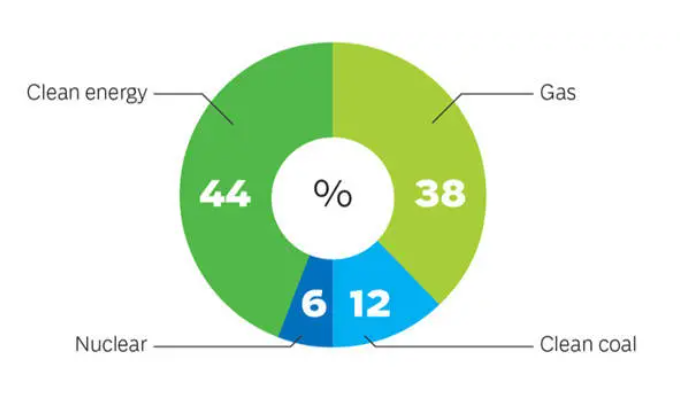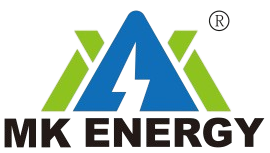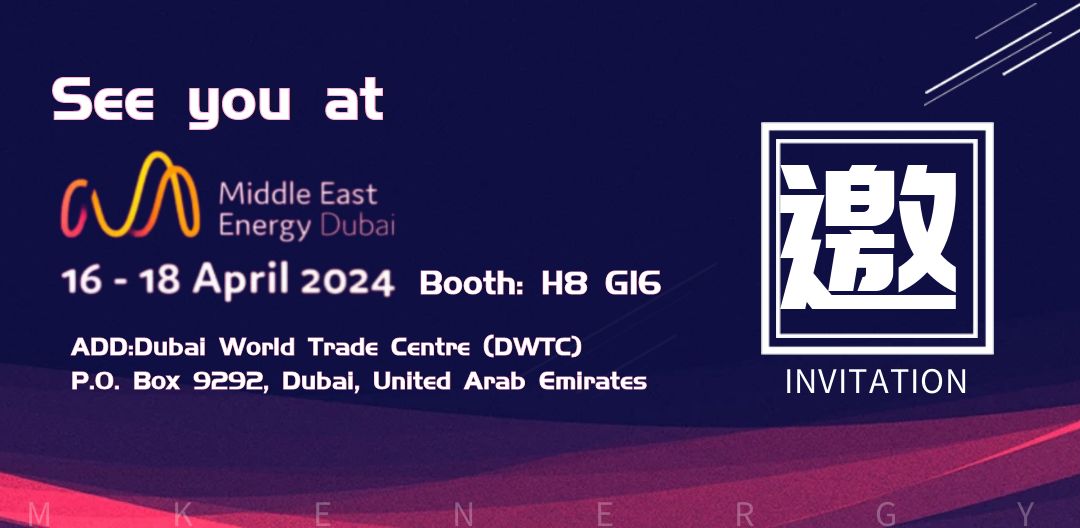Exhibition introduction
MK ENERGY will participate in Middle East Energy 2024 (MEE), which is the largest professional energy exhibition in the Middle East and Gulf region. It attracts a large number of manufacturers, traders and buyers in professional fields to participate in the exhibition every year, promoting more than tens of billions of dollars in sales. trading. The exhibition lasts for three days, from April 16th to 18th. The exhibition is dedicated to the theme of electricity and renewable energy, and has become the largest and best professional trading platform in the Middle East.
The exhibition will be held at Dubai World Trade Center. The total exhibition area of the 48th exhibition reaches 21,300 square meters. There are more than 1,000 exhibitors from 90 countries around the world, and the number of registered visitors is 28,254, of which 68% of the registered visitors are from the Gulf area. With 14% coming from Africa, it is truly the premier energy industry event in the Middle East and Africa. MK ENERGY’s booth in 2024 will be H8 G16.
Market information
Renewable energy deployment
The Middle East and North Africa region has attracted approximately US$35 billion in renewable energy investment annually in recent years, and the deployment of renewable energy will accelerate in the coming years. In project bidding and auctions, driven by its favorable financing conditions and falling technology costs, renewable energy will enter the public eye more and usher in a peak period of development. Under the renewable energy targets already in place, the region could save 354 million barrels of oil equivalent (a 23% reduction) by 2030, reduce power sector CO2 emissions by 22% and reduce power sector water withdrawals by 17%.
“2050 Energy Strategy”
In order to reduce dependence on traditional energy and diversify energy supply, the UAE government attaches great importance to the development of clean energy. To this end, the UAE has formulated the “2050 Energy Strategy”. The UAE Energy Plan 2050 was launched by Sheikh Mohammed bin Rashid Al Maktoum, Vice President and Prime Minister of the UAE and Ruler of Dubai. The plan aims to increase the contribution of clean energy to 50% of the entire energy structure by 2050(the picture on the right shows the UAE’s electricity supply structure in 2050, thus saving AED 700 billion. The strategy aims to invest AED 600 billion to meet energy needs and ensure the sustainability of the UAE’s economic growth, which will also save AED 700 billion. The scheme will stimulate economic growth and investment in energy storage and help reduce energy consumption. It marks the beginning of a sustainable development journey for the UAE’s power sector.

Photovoltaic resources
The Middle East is not only rich in oil and gas, but also has abundant photovoltaic resources. The climate in the Middle East is dominated by tropical deserts, and solar radiation energy is very high in almost all areas. The total annual solar radiation in the UAE is 7920MJ/m2, and the amount of technology development is approximately 2708TW·h per year. Israel’s total annual solar radiation is 8640MJ/m2, and its technology development volume is approximately 318TW·h per year. Iran’s total annual solar radiation is 7920MJ/m2, and its technology development volume is approximately 20PW·h per year. The total annual solar radiation in Jordan is about 9720MJ/m2, and the annual technology development volume is about 6434TW·h. Israel’s total land area is 20,330km2. The Negev Desert covers half of the country’s land and is also one of the best areas for solar energy utilization. Israel’s solar thermal utilization technology is among the highest in the world. The regions with the best solar radiation intensity and sunshine hours in the world include North Africa, the Middle East, the southwestern United States and Mexico, southern Europe, Australia, South Africa, the east and west coast of South America, and western China.
Energy investment
Saeed, head of the Dubai Electricity and Water Authority (DEWA), said DEWA will invest 8 billion dirhams (approximately $2.2 billion) in energy projects this year, including Maktoum Solar Park. By 2030, renewable energy will account for 25% of power generation, and by 2050, it will account for 75%. Saeed emphasized that Dubai is transitioning to a green economy in two aspects. The first is to reduce energy consumption, and it is expected that energy and water demand will be reduced by 30% by 2030; the second is to improve the supply structure and increase supply channels, especially clean energy.
Low-carbon energy projects
According to the Zawya website, APRICORP’s latest report shows that the low-carbon energy industry in the Middle East and North Africa is accelerating project activity, with project value reaching US$257 billion by 2030. These industries include renewable energy (solar photovoltaic, wind, hydro), hydrogen, nuclear and waste-to-energy. In terms of planned and committed project investments, solar photovoltaics accounted for 50% of the project value, followed by hydrogen at 21%, nuclear at 14%, wind at 10%, and hydropower and waste-to-energy projects combined at 5%. Sharbatly predicts that photovoltaic power generation in the Middle East will reach 50GWh by 2030. Saudi Arabia alone has a generating capacity of 20GWh, Egypt and the United Arab Emirates will generate 10GWh, while Qatar, Kuwait and Oman have a combined generating capacity of 10GWh.
The Gulf states have diversified their economies
Renewable energy will play an important role in the economic diversification process of Gulf countries. In 2018, renewable energy power generation projects in the Gulf countries reached US$2.1 billion, and by 2022, renewable energy power generation will reach US$25 billion. In addition, the use of renewable energy by Gulf governments, regulators and operators is growing steadily. According to reports, by 2020, the deployment and investment in new energy in the Gulf region will reach US$16 billion.
WEC Energy Forecast
According to the World Energy Council (WEC), the total electricity demand in the Gulf countries will reach about 100,000MW in the next ten years, creating a huge market for solar power generation. In addition, MESIA pointed out that in addition to large-scale solar, commercial and industrial rooftop solar has begun to show a growth trend.
For more industry news, please continue to pay attention to our updates or follow our social media accounts.

